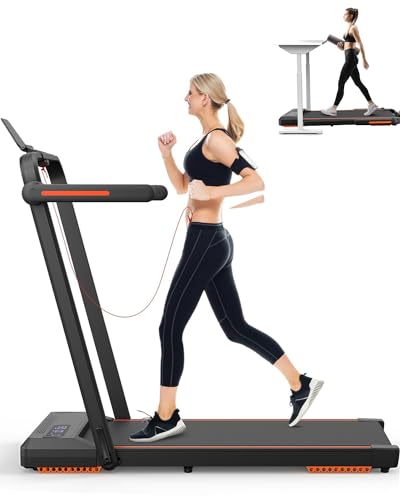What’s The Current Job Market For Tread Mill Professionals?
Treadmills: A Comprehensive Guide to Understanding Their Functionality, Benefits, and Appropriate Selection
Intro
Treadmills have actually ended up being a staple in modern-day physical fitness routines, both in homes and gyms worldwide. They provide a practical and efficient method to preserve cardiovascular health, increase endurance, and help in weight management. This article checks out the various types of treadmills, their advantages, functions to consider when buying, and some FAQs to guide users in making notified choices.
Types of Treadmills
When it comes to selecting a treadmill, it is vital to understand the different types readily available in the market. Here are the primary classifications:
1. Handbook Treadmills
- Mechanism: These treadmills have a simple design and depend on the user’s efforts to move the belt.
- Pros: More budget-friendly, quieter operation, no electrical energy required.
- Cons: Limited features, might not provide the same series of exercise strength.
2. Motorized Treadmills
- Mechanism: Powered by a motor that drives the belt, enabling users to stroll or run at a set speed.
- Pros: Greater variety of speeds and inclines, equipped with various features such as heart rate displays and exercise programs.
- Cons: More pricey and may require more upkeep.
3. Folding Treadmills
- Mechanism: Designed for those with minimal space, these treadmills can be folded for easy storage.
- Pros: Space-saving, typically motorized, flexible features.
- Cons: May be less durable than non-folding designs.
4. Commercial Treadmills
- Mechanism: High-quality machines developed for usage in fitness centers and physical fitness centers.
- Pros: Built to withstand heavy usage, advanced functions, often consist of service warranties.
- Cons: Pricey and not ideal for home usage due to size.
5. Curved Treadmills
- Mechanism: A distinct style that allows users to propel the belt using their own energy.
- Pros: Offers a more natural running experience, promotes better running type.
- Cons: More expensive and can be noisier.
| Treadmill Type | Pros | Cons |
|---|---|---|
| Handbook | Inexpensive, no electrical energy needed | Minimal functions |
| Motorized | Range of speeds, advanced functions | Maintenance required |
| Folding | Space-saving, typically motorized | May do not have sturdiness |
| Business | Constructed to last, professional-grade functions | Costly |
| Curved | Natural running experience, promotes excellent form | Higher cost |
Advantages of Using Treadmills
Treadmills use numerous benefits that can contribute to one’s overall health and physical fitness objectives. Some of these benefits include:
- Convenient Workouts: Treadmills enable users to exercise indoors despite weather condition conditions.
- Cardiovascular Health: Regular usage can enhance heart health by increasing endurance and promoting healthy flow.
- Weight Management: Effective for burning calories, which helps in weight reduction and management.
- Personalized Workouts: Users can control speed, slope, and duration to produce customized exercise experiences.
- Safety: Treadmills provide a predictable surface area, reducing the risk of falls compared to outdoor running.
- Multifunctional: Many treadmills come with features like heart rate screens, workout programs, and even entertainment systems.
Selecting the Right Treadmill
When choosing a treadmill, prospective purchasers must think about numerous key aspects:

Features to Consider:
- Motor Power: Tread Mill Typically determined in horsepower (HP), a motor strength of a minimum of 2.5 HP is advised for major runners.
- Belt Size: A longer and larger belt accommodates numerous stride lengths, supplying convenience throughout exercises.
- Slope Settings: Adjustable slope features mimic outdoor hill running and can increase workout intensity.
- Weight Capacity: Ensure the treadmill can support the user’s weight for safety and durability.
- Console Features: Look for easy to use control panels, workout programs, and Bluetooth compatibility for streaming music or other functions.
Budget plan Considerations
- Under ₤ 500: Entry-level manual treadmills appropriate for casual walkers.
- ₤ 500 – ₤ 1,500: Mid-range motorized treadmills that provide more features and better sturdiness.
- ₤ 1,500 – ₤ 3,000: High-end designs with sophisticated technology, bigger motors, and longer guarantees.
- Over ₤ 3,000: Commercial-grade treadmills ideal for regular use in health clubs or training centers.
Regularly Asked Questions (FAQs)
1. How typically should I utilize a treadmill?
It is advised to use a treadmill a minimum of three to 5 times a week, integrating various intensity levels for best outcomes.
2. Can I slim down by using a treadmill?
Yes, constant use of a treadmill can contribute to weight reduction, specifically when combined with a well balanced diet plan and strength training.
3. What is the best speed to stroll on a treadmill for novices?
A speed of 3 to 4 miles per hour is an ideal variety for newbies. It’s vital to start slow and slowly increase speed as comfort and endurance enhance.
4. Do I need to use a treadmill if I currently run outdoors?
Using a treadmill can supply additional benefits, such as controlled environments and varied exercises (slope, intervals) that are not always possible outdoors.

5. How do I preserve my treadmill?
Routine maintenance includes oiling the belt, cleaning up the deck and console, and checking the motor for optimal performance.
Treadmills are necessary tools for those aiming to enhance their fitness levels in a regulated and hassle-free way. With numerous types readily available, understanding their functions and benefits is important for making an informed purchase. By thinking about personal exercise requirements, space accessibility, and spending plan restrictions, people can discover the most ideal treadmill that fits their way of life. Integrating treadmill workouts into a well balanced physical fitness regimen can cause better health outcomes and a satisfying exercise experience.


